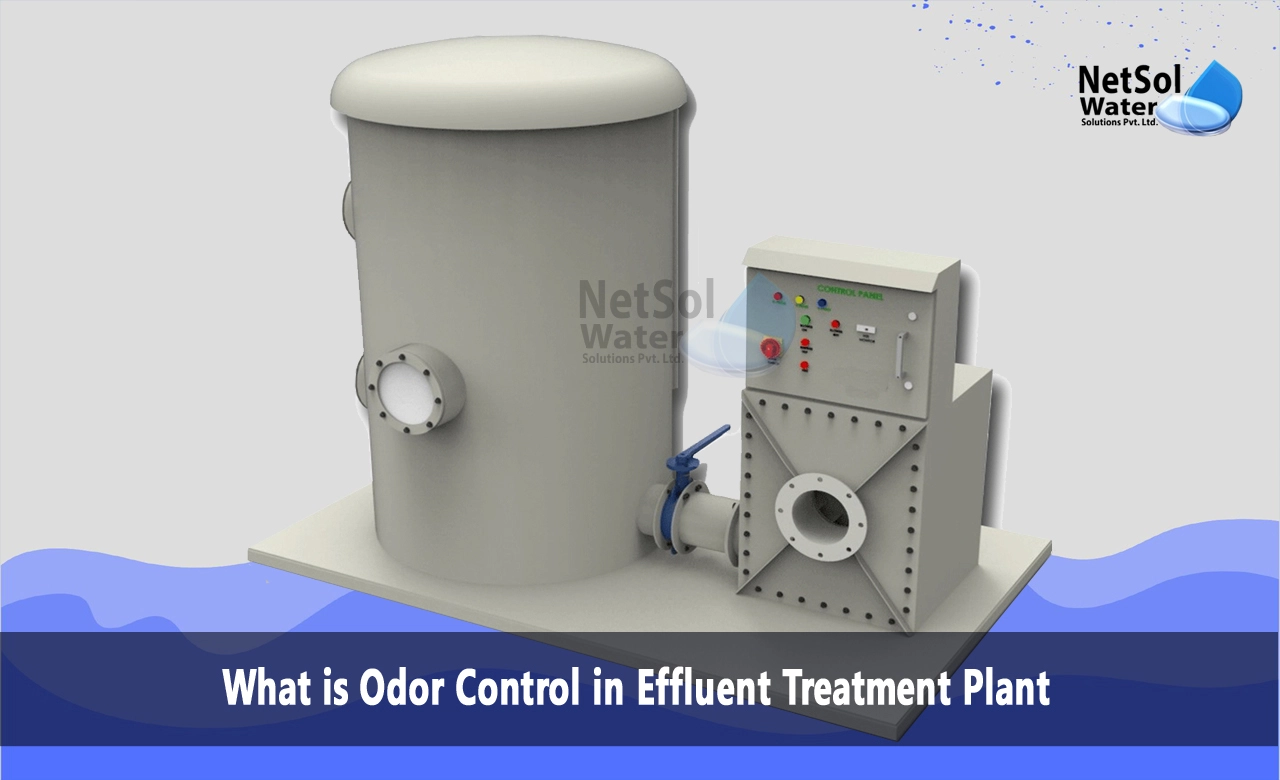What is Odor Control in Effluent Treatment Plant?
Odor emissions represent one of the most persistent challenges effluent treatment facilities face in sustaining positive community relations and a favorable operating environment. The very nature of processing industrial and municipal wastewater concentrates a complex blend of malodorous compounds from biodegradation, chemical interactions, and anaerobic conditions. Allowing such foul air emissions to proliferate subjects surrounding neighbourhoods to nuisance odors while exposing workers to potential health hazards. Proactive odor control strategies integrating source mitigation, capture, and treatment solutions are essential for effluent plants to operate reputably.
Common Odor Sources and Characteristics
Effluent treatment odors arise from both industrial waste streams and biological treatment processes. Some prevalent odorous compounds include hydrogen sulfide, ammonia, amines, mercaptans, sulfur-based organics, volatile fatty acids, and other reduced sulfur and nitrogen species. Their varying water solubilities and vapour pressures create diverse challenges in terms of venting locations and concentration levels. Continuous odor sources like influent channels contrast with intermittent peak sources during solids handling, dewatering operations or process upsets. Understanding each site's unique odorant fingerprint informs effective control approaches.
Source Mitigation Through Nutrient/Process Control
Addressing odors proactively at upstream sources offers the most sustainable management solution rather than end-of-pipe treatment alone. Enhanced nutrient removal and dissolved oxygen control reduce biological sulfate reduction, generating hydrogen sulfide. pH adjustment prevents ammonia/amine off-gassing. Covered and mixed anaerobic digestion, along with adequate solids retention, stabilizes organic acid production. Flow equalisation basins, chemical oxidants, and biological filters also mitigate odorants upstream. Monitoring instrumentation tracks odor-related parameters, automating treatment process control responses. Source reduction simplifies subsequent treatment requirements.
Containment and Collection Systems
Even with optimal process control, some odor emissions will inevitably occur, requiring physical capture and containment for treatment. Effluent treatment facilities utilise covers, enclosures, biofilters, and ductwork networks routing foul air from process areas and headspaces to controlled treatment locations. Design factors like air change rates, static pressure limits, hazardous area classifications, material compatibility, and corrosion resistance dictate specifications. Computational fluid dynamics models optimise airflow network configurations,minimising fugitive emissions. Containment must be balanced against operating requirements for access and passive air exchange.
Biological Odor Treatment Systems
Biofilters and bioscrubbers provide effective biological odor treatment solutions leveraging microorganisms immobilised on media catalysing oxidation reactions converting odor compounds into carbon dioxide and water vapour. The resulting clean airstream is discharged or recycled. Biofilters use non-vented packed beds of biologically-activated media like tree bark, compost, or synthetic plastic structured packing. Bioscrubbers are re-circulating liquid systems absorbing odors into aqueous phase where microbes facilitate oxidation before venting. Key design factors include nutrient levels, moisture content, pressure drop, residence times, and microbial speciation.
Chemical Scrubbing and Adsorption Methods
For concentrated, high-intensity odor streams, chemical treatment like oxidising scrubbers, carbon adsorption, or masking/neutralising agents may be appropriate. Sodium hypochlorite or other oxidants facilitate reactive compound transformation. While activated carbon adsorption allows beneficial recovery and selective compound targeting. Neutralising agents like slaked lime introduce masking fragrances into airstreams for mitigation during peak emission events. Chemical treatment requires proper materials compatibility along with handling, storage, and spent media disposal protocols.
Netsol Water's Comprehensive Odor Control Solutions
Netsol Water provides turnkey odor control assessments, engineering designs, equipment, and life cycle services for effluent facilities. Our treatment trains leverage source sampling data to specify optimal integrated biological and chemical scrubbing system configurations tailored for each site's unique odorant profile. Backed by computational fluid modelling, our teams ensure seamless airflow network integration alongside efficient odour capture from all foul air source locations.
Conclusion
Given their inherent odor generation potential, proactive comprehensive control strategies are imperative for effluent treatment operations to maintain positive community relations and worker safety. Multifaceted odor control combines strategic process optimization for source reduction with robust air collection networks and highly effective biological, chemical, or thermal treatment solutions. Increasingly stringent emissions regulations and sustainability commitments provide further impetus for adopting the best-available odour mitigation technologies. By leveraging experienced design experts like Netsol Water, effluent plants can navigate all facets of odor control system implementation to achieve community acceptance.
Netsol Water is Greater Noida-based leading water & wastewater treatment plant manufacturer. We are industry's most demanding company based on client review and work quality. We are known as best commercial RO plant manufacturers, industrial RO plant manufacturer, sewage treatment plant manufacturer, Water Softener Plant Manufacturers and effluent treatment plant manufacturers. Apart from this 24x7 customer support is our USP. Call on +91-9650608473, or write us at enquiry@netsolwater.com for any support, inquiry or product-purchase related query.



